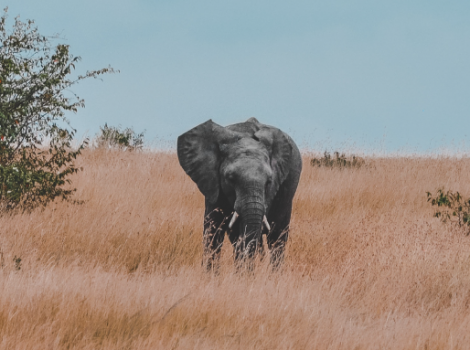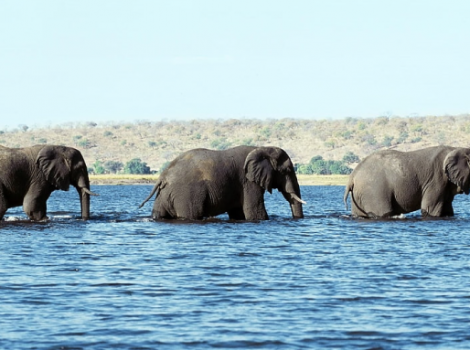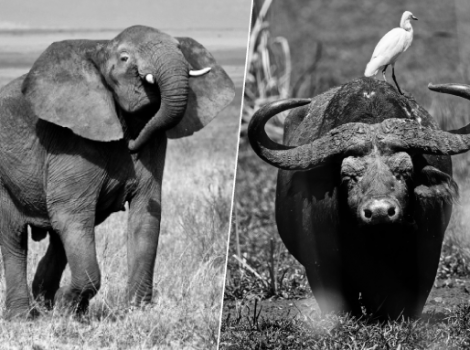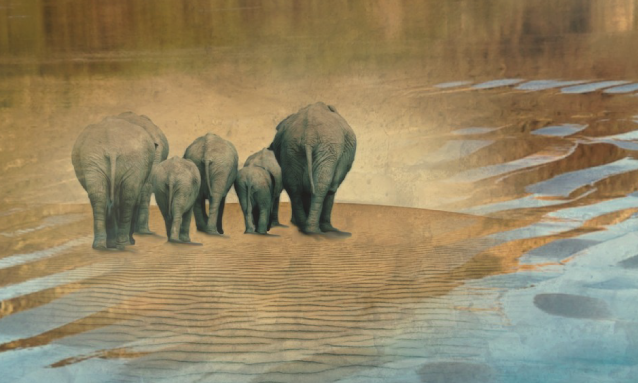
The Chobe National Park in northern Botswana is a 11, 700 sq km (4,517 sq mile) sanctuary for animals. Families of endangered African elephants wander freely through the park, which is bordered by Namibia in the north and Zimbabwe in the east. The animals visit watering holes, feed on the lush vegetation, and play with the youngest of their groups.
African elephants in nearby countries such as Zimbabwe, Zambia, and Namibia are migrating to parks like Chobe, where strict anti-poaching policies allow them to thrive.
Botswana is now home to roughly 130,000 elephants—a third of Africa’s entire elephant population. This is an increase of over 30,000 elephants in Botswana since 1995 against a backdrop of declining numbers across the continent.
In 2016 the Great Elephant Census published the first-ever continent-wide, standardised survey of African savannah elephants. The census found that savannah elephant populations in Africa fell by an estimated 30% – or 144,000 animals in total—between 2007 and 2014. Today there are only around 350,000 left on the entire continent. The survey authors blamed poaching as the primary reason for the decline.
The 2016 survey did not include forest elephants, whose populations are difficult to discern because they live in dense, forested areas and would require labour-intensive ground counts to survey. Estimates suggest there are only 100,000 left today. In total, it’s believed that there were over 1 million elephants in Africa in the 1970s, and possibly more than 2 million at the beginning of the 20th century.
Botswana, however, has become a safe haven for the world’s largest land mammals. “Elephants are using well-known migratory routes into Botswana to flee threats from neighbouring countries,” says Mark Hiley, co-founder of the UK-based nonprofit National Park Rescue. “The systematic movement of elephants into Botswana is linked to their survival.”
Communicating for survival
Researchers believe this migration is just one survival mechanism elephants have developed in response to poaching, conflict, urbanization, agriculture, and other pressures in Africa.
In 2016, one elephant made a treacherous 209 km (130 mile) journey over three weeks from the relative safety of Kenya to conflict-ridden Somalia, all under the cloak of darkness. Morgan, as the researchers called him, remained in Somalia for just a day and a half before turning back.
“We don’t know the precise reason for his migration into Somalia,” says Iain Douglas-Hamilton, founder of Save the Elephants, a UK charity headquartered in Nairobi that conducts research on elephant behaviour and ecology, “but we suspect it was to mate.”
“Moving by night was an extreme form of survival in a region where elephants are under threat from poaching,” adds Douglas-Hamilton. “He was the first elephant on record to visit in Somalia in 20 years.”
Inspired by the elephant’s journey, researchers at the University of Twente in the Netherlands worked with Save the Elephants to conduct a study last September on African elephant migratory patterns. They found that some elephants in sub-Saharan Africa have started uncharacteristically travelling at night to avoid the threat of poaching that usually occurs during the day. Elephants also have developed sophisticated gestures, sounds, infrasound, and even chemical secretions to relay messages to one another for survival purposes.
“Through various means, elephants can suggest that the group moves on, that they sense danger, or that they are in distress,” says Douglas-Hamilton.
Elephants also have developed sophisticated gestures, sounds, infrasound, and even chemical secretions to relay messages to one another for survival purposes.
Indeed, it’s not just where elephants are going that’s of interest to researchers, but when, and how they’re communicating about it within groups, between herds, and across generations. In 1977, Mozambique gained independence from Portuguese colonial rule; two years later the country collapsed into civil war. By the time the war ended in 1992, over a million people had been killed and 5 million others had been displaced.
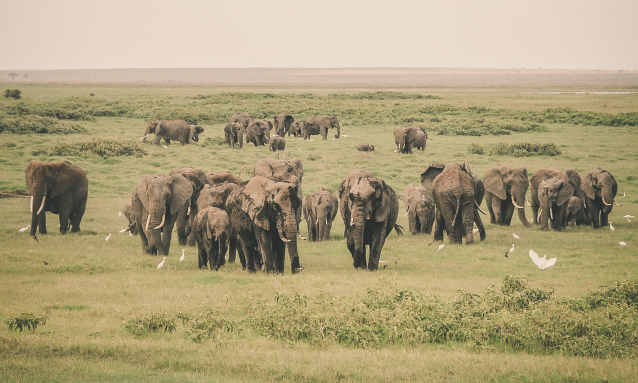
During the conflict, soldiers ate elephant meat and traded the animals’ ivory for weapons and ammunition, says Joyce Poole, co-founder and scientific director of ElephantVoices, an organisation that studies the social behaviour and communication of African elephants. Mozambique’s elephant population was completely decimated: 90% of the 4,000 elephants that lived in the greater Gorongosa area in central Mozambique, where much of Poole’s research has focused, had been killed.
“Twenty-five years later and many elephants in Gorongosa are still scared of humans,” says Poole. “When family groups of elephants come into contact with people, older, experienced females typically communicate to their family that there is a threat and will charge or flee depending on the situation. Calves and juveniles learn how to react from their mothers.”
Researchers have also found that African elephants can differentiate between human languages in order to identify potential threats. For instance, elephants in Kenya’s Amboseli National Park, near the Tanzanian border in the south, have shown the ability to distinguish between the voices and scents of potentially threatening spear-carrying Maasai warriors with those of less threatening farming tribes.
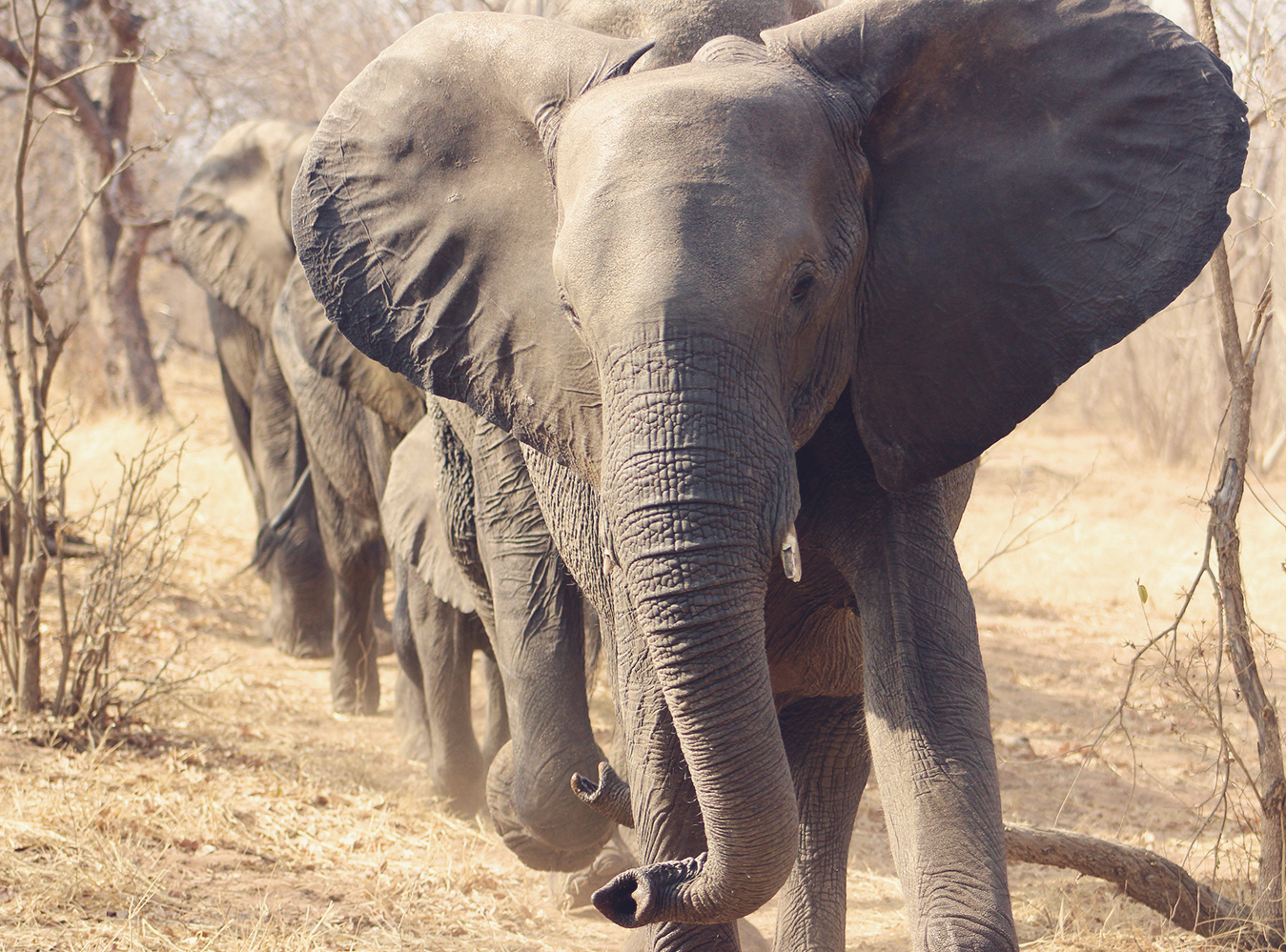
To a deeper understanding
Research on elephant populations increasingly illustrates the complex ways they communicate and, consequently, their intelligence. But we have only scratched the surface. Although researchers have identified a number of general alarm calls used by elephants, they haven’t distinguished calls or gestures that specifically warn of poaching. The type of work required to figure out the nuances of elephant communication would force researchers to get extremely close to the elephants, Douglas-Hamilton says, which could put the humans at risk.
Research on elephant populations increasingly illustrates the complex ways they communicate and, consequently, their intelligence.
Studying elephants in general poses a number of other challenges. Habitat, past interaction with humans, and even differences in elephants’ personalities all affect the way research can be carried out. Poole describes working in Amboseli, Kenya,
“Within a few meters of calm elephants, which offered great visibility and good quality recordings and a deep understanding of how elephants behave,” she says. “In Gorongosa, Mozambique, the habitat is thick and the elephants can be both fearful of people and aggressive toward them, which makes studying them there much harder.”
Researchers want to maintain harmony between the elephants and human communities living near them, to create a ready environment to study the animals.
“Issues with crop raiding and poaching, for example, mean that people near elephant populations can get very frustrated with proximity with the animals,” explains Lucy Bates, a research fellow in the School of Psychology at the University of Sussex, UK, who has spent a number of years studying African elephants. “This can, in turn, create political issues for the researchers and block important studies.”
Elephant researchers and advocates hope that as technology and our understanding of these pachyderms develops, challenges will dissipate.
“As time goes on and scientists gain access to more sophisticated technology, we are likely to find that the calls elephants produce hold very specific meanings,” says Poole. “Humans have represented a primary threat to elephants for many thousands of years. I feel certain that elephants have a specific call to refer to our species—and likely several different calls to communicate to one another whether the specific humans represent a threat or not.”
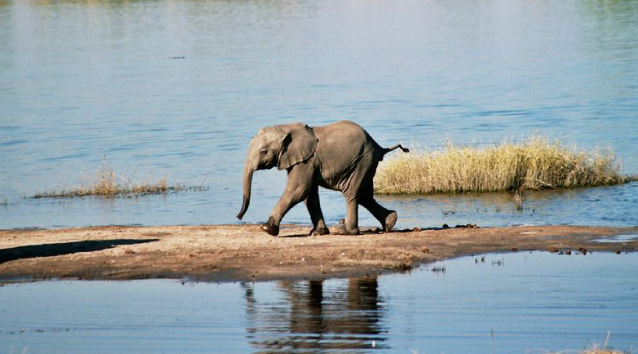
In the meantime, current observations still offer incredible insight: In times of heavy poaching, elephants appear to gravitate towards safe havens and hunker down. And even after the threat is gone, it can still take a generation or two for elephants to relax and move beyond the boundaries of these safe spaces.
Source: http://qz.com/1203988/african-elephants-are-migrating-to-safety-and-telling-each-other-how-to-get-there/?utm_source=parBBC
Image by: cocoparisienne

